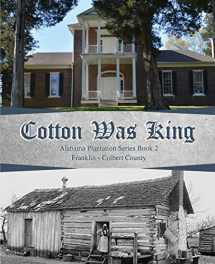
Cotton Was King: Franklin - Colbert (Alabama Plantations)
Book details
Summary
Description
In, "Cotton Was King Franklin-Colbert Counties" Rickey Butch Walker gives a wonderful account of Chickasaw Chief George Colbert as a cotton planter and the role of the Chickasaw Colbert's prior to the first white planters who moved with their slaves to claim the fertile lands of the Tennessee River Valley. After the Indian claims to the land were abolished by the 1816 treaty. The United States government transferred land titles to white settlers through federal land sales beginning in 1817. From the nutritionally deprived soil of cotton farms in the east, slave-owning planters poured into early Franklin County, Alabama, most of which is now present-day Colbert County.
Rickey Butch Walker gives profiles of many of these wealthy plantation owners prior to the Civil War. This is the first detailed narrative of some of the white families of Franklin- Colbert County who helped develop the cotton industry of northwest Alabama. Some of the affluent planters, their plantations, land holding, property locations, and numbers of black slaves are discussed in detail. These early planters were dependent on black slave labor to become very wealthy and control vast tracts of land. This is a valuable read for anyone interested in the local history of cotton barons who came to North Alabama from North Carolina and Virginia.


We would LOVE it if you could help us and other readers by reviewing the book
Book review



